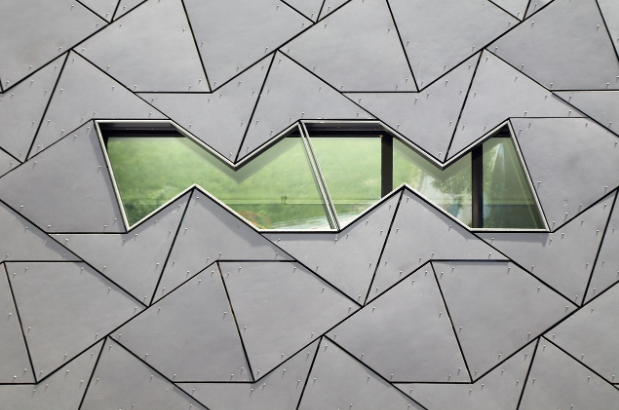How Can Design Thinking Be Implemented In The Workplace?
Nov 04, 2022 | Imna
 Design thinking is a creative process of thinking through which an innovator identifies the problems that their user group faces, explores alternative options by challenging norms and comes up with feasible solutions that align with the original problem statement through a trial and error method. In workplaces, this process should be a dynamic one that is constantly adapting to the needs of its employees with the application of the principles of design to make the workplace a more inclusive and accessible space. The design of a workplace should reflect the organisation’s core principles while incorporating modern technology. The aesthetics of a workplace are an essential element in improving the overall productivity of employees, improving their mental health and just creating a more welcoming space overall for those who spend a minimum of 8 hours in that place. Design thinking is no longer just about scattering a few potted plants here and there and adding a few paintings to brighten up the place. It is a much more complex and intuitive process that takes into account a plethora of ever-changing factors that affect all employees’ physical and psychological comfort while fulfilling their aesthetic needs.
Design thinking is a creative process of thinking through which an innovator identifies the problems that their user group faces, explores alternative options by challenging norms and comes up with feasible solutions that align with the original problem statement through a trial and error method. In workplaces, this process should be a dynamic one that is constantly adapting to the needs of its employees with the application of the principles of design to make the workplace a more inclusive and accessible space. The design of a workplace should reflect the organisation’s core principles while incorporating modern technology. The aesthetics of a workplace are an essential element in improving the overall productivity of employees, improving their mental health and just creating a more welcoming space overall for those who spend a minimum of 8 hours in that place. Design thinking is no longer just about scattering a few potted plants here and there and adding a few paintings to brighten up the place. It is a much more complex and intuitive process that takes into account a plethora of ever-changing factors that affect all employees’ physical and psychological comfort while fulfilling their aesthetic needs. Keeping the core principles of design thinking and the importance of aesthetics in a workplace in mind, organisations can follow the following step-by-step process to make sure their design process is effective and rewarding.
a) Research using primary and secondary data
After identifying the problem, the most important part of the first step in the process of design thinking is taking into account the user experience of the organisation’s employees. One needs to take into consideration the demographic of the employees and factor in their specific needs such as age, gender, religion, special needs, line of work, working hours and most importantly emotional needs. Their aspirations, desires, goals, level of engagement and experience in totality should be assessed and the organisation should evaluate the return on investment/importance of such initiatives. Previous projects can also be analysed and the experience from such projects can be taken into account to identify the best possible alternative to solve the identified problem. Empathy helps not only define what the problem is but also define possible solutions.
b) Creation of Models
Design thinkers can make use of actual, physical models to explore different options, check their feasibility and communicate their effectiveness to the stakeholders. Such models can be in the form of diagrams and sketches drawn out on a sheet of paper or digitally which gives the viewer the blueprint of the entire workspace or else they can also develop 3D models of the entire office to give its viewers a more holistic understanding of the designer’s vision.
c) Develop Prototypes of Models
After looking at the models and choosing the best option for a current scenario, prototypes are developed and implemented to check the actual feasibility of a particular idea or cluster of ideas. This allows for exploration and experimentation while taking in inputs from the employees so that the organisation can gain a better understanding of what works and what does not. Feedback from employees is a crucial element of this step.
d) Conduct Checks
In this process, the most crucial step is to keep constantly evaluating the models that have been implemented and identifying the aspects of it that are failing to achieve their desired goal. The recognition of the fact that an organisation will probably not get everything correct on the first try is what helps foster further innovation, nurturing a spirit of improvement and adjustments. Once the problems are identified this process starts again and continues until optimum performance and happiness of employees are achieved.
Using the above process, a few tips regarding design thinking and the improvement of the aesthetics of a workplace can be adopted by organisations.
1. Inclusive Spaces
Considering that organisations employ a diverse group of people, it is of prime importance that everyone feels comfortable and their needs are met so that they can perform their best. The introduction of ramps upon arrival, designating clear parking spots for disabled persons, lifts big enough to accommodate wheelchairs, automatic doors and so on are some examples of simple changes a company can bring to create a more inclusive space. The floor plan of the office should be designed in such a way that there are minimal doors, there is enough space between tables and the height of chairs and tables should be adjustable so that they can be navigated easily. Including audio-visual aid and braille instructions is a great way to use technology to improve the design of offices. ADHD, Autism, Dyspraxia and Dyslexia are all examples of neurodiverse conditions and considering that environments play an important role in affecting our ability to work, spaces should be designed in such a way that caters to the needs of employees across the spectrum. This can include quiet working zones, implementing sound and light control, using calming colours in the overall design and so on.
2. Sustainability and Natural Spaces
With companies becoming more sustainable in their operations, this should also be reflected in their office space design. Carbon zero initiatives and other sustainable goals can be achieved by making use of systems that are highly efficient, using LED lights, making use of natural light and ventilation and reducing the use of electricity, re-using and thrifting the furniture can help bring a more tangible environmental impact than just segregation your trash in different dustbins. Certifications like SKA and LEED are great for the evaluation of the sustainability of buildings. Incoprorating natural elements like fountains, natural-coloured walls and plants can help enhance the feeling of bringing nature inside.
3. Ergonomic interior design
Ergonomic design makes sure that the body is in its most natural position while working to reduce strain on muscles. This includes using appropriate furniture and making sure employees remain active during the day. Researching and implementing effective ergonomic furniture helps reduce physical on employees who sit in one position for a good 8 hours of the day. It can alleviate back pain, posture issues and reduce the chances of work-related musculoskeletal disorders (WMSDs). A study by the Washington State Department of Labor and Industries found a decrease in injuries from WMSDs by 61% and a drop in turnover by 87% by using ergonomic design. Including treadmill desks, ball chairs and sit-stand chairs can help employees remain active while adding a fun element to work.
4. Flexibility in work : Employees should be given the choice to opt for remote working, hybrid working or in-office working depending on their schedules and needs which may change over time. To keep up with and accommodate the fluctuating employee number offices need to set up booths and do away with separate offices. Considering that different employees have different needs (for eg- new working mothers may prefer a hybrid or remote working option and younger employees might prefer in-office work as offices might be socialising space for them) organisations need to create a collaborative environment that allows those at home connect with the office seamlessly. Sofas and lounge areas can be provided to create a more at-home feel.
5. Natural Light and Open Spaces
To maximise daylight, save on electricity costs, reduce emissions and improve the overall mood of employees workspaces should design offices in such a way that sunlight streams in easily through skylights, windows, etc. The reduction in the use of artificial, fluorescent lights can help improve the productivity and overall mood of employees. In case buildings cannot accommodate windows and skylights, organisations can opt for the simpler alternative of using diffused lighting, natural-looking artificial light and reducing glare to reduce the strain on employees. More open spaces help not only make the office more accessible but also create a collaborative environment where there is a free-flowing exchange of ideas across and within departments while creating conditions that are conducive to socialising and teamwork.
6. Incorporating Artwork
Maslow’s hierarchy of needs ranks the aesthetic needs of a person as a crucial element to be achieved to gain self-actualisation, that is reaching one’s maximum potential. Aesthetic needs need to be fulfilled through beautiful imagery or novel and aesthetically pleasing experiences which can be provided in office spaces by making use of sculptures, paintings and designs that are artistically satisfying. Using colour theory to create either a collaborative environment or a relaxing one depending on the need can help boost productivity. Using a mix of modern and vintage furniture, rugs and tapestries that reflect the company’s values, bright-coloured accessories, etc is a great way to incorporate aesthetics into office spaces. Using sculptures and paintings that have been created by local artisans or minority groups also helps support their work and helps them sustain a living while spreading awareness of their work among employees.
7. Smart Offices and Utilising Technology
Integrating an office with technology can help create an office that is not only intuitive and receptive to employees’ needs but also makes it more inclusive. Smart offices enable companies to understand how to improve spaces that employees and optimise their performance. Digital sensors can be used to regulate lighting and sound as per need, air quality, and help a smooth flow of employees who might have opted for hybrid working options. Touch-sensitive doors can help in the more effortless movement of employees. Good wireless connectivity that can support the strength of employees is crucial in staying connected to those working from home.
Recommended








